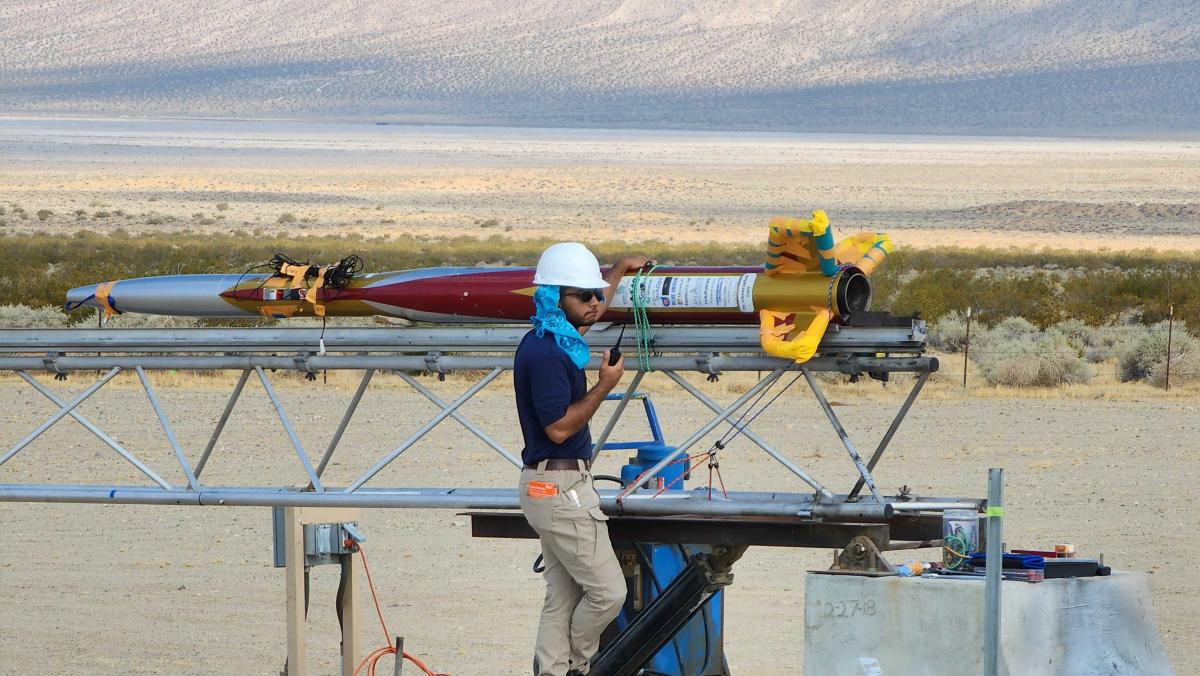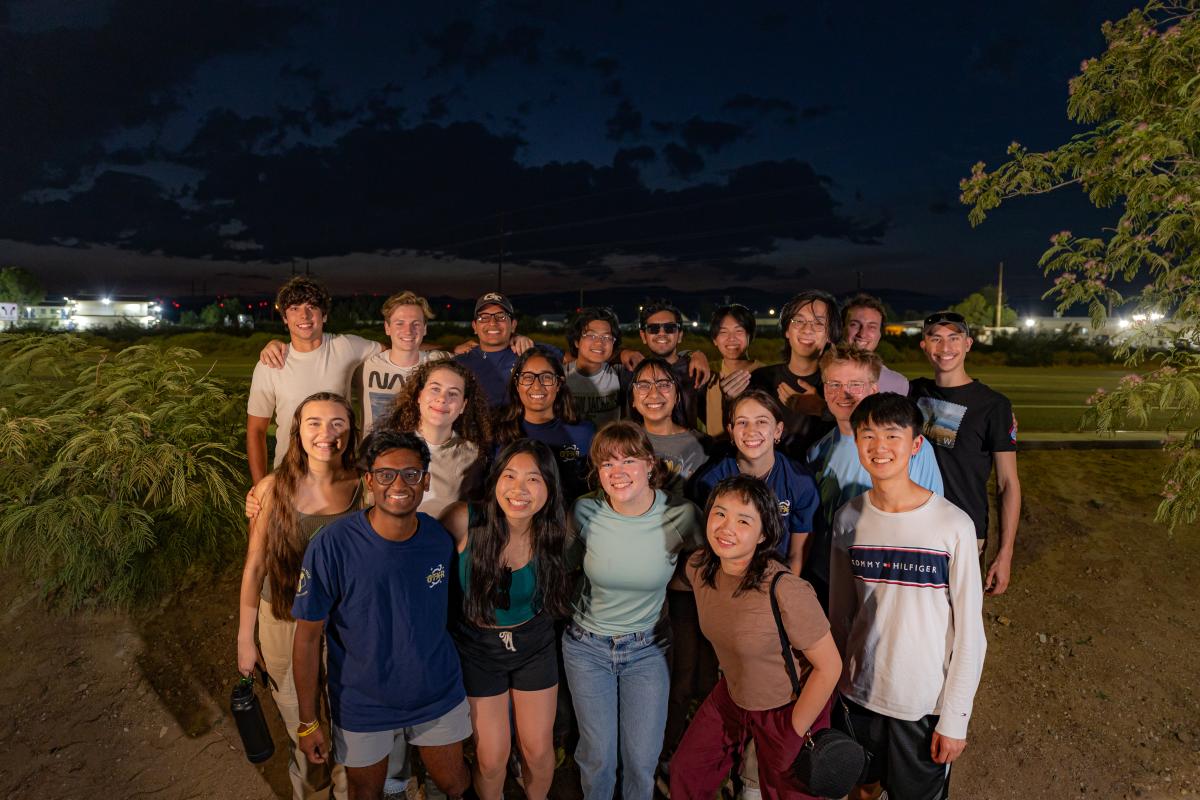The Georgia Tech rocketry team discusses lessons learned and ambitious plans for future launches.

The Ramblin' Rocket Club celebrates their latest achievement, proudly displaying their newly constructed two-stage rocket, Fire on High.
One early Saturday morning in July, 62 Georgia Tech students, alumni, and the Ramblin’ Rocket Club (RRC) sponsors, stood shoulder to shoulder in underground bunkers as they counted down from 10, awaiting the “go for launch” call.
Leading up to the launch, a convoy of four students packed up a cargo van and hit the road for the three-day journey to the Friends of Amateur Rocketry launch location in Mojave, California, while another fleet of students flew in from all over the country.

The RRC safety team runs through their safety procedures ahead of the launch.

RRC preparing to position Fire on High onto the rails vertically.
“It was exciting, especially because this year we were able to bring the most members we’ve ever had to the launch site, so the bunkers were full,” said Michael Pena, AE undergraduate student and RRC president. “Everyone was a bit nervous because we’re about to launch a rocket and a years-worth of work, but once the button was pressed everyone was yelling because of the excitement seeing it go off the rail”.
Over the past 4 years, the Georgia Tech Experimental Rocketry (GTXR) team, a subset of RRC, has made the annual trek out west to launch custom-built two-stage rockets in the hopes of becoming the first collegiate rocketry team to reach space using a two stage solid rocket motor sounding rocket.
Usually, they design and launch one rocket, but this year they needed to test out two critical components: a rocket motor and the test flight computer. Therefore, they built one rocket - Fire on High – to test the eight-inch rocket motor and a second rocket - Strange Magic - to test out the new custom flight computer.
The development of two independent rockets is a significant undertaking. Each rocket has been through several rounds of design reviews, followed by countless work sessions.
Throughout the manufacturing process, the majority of the hardware was machined by students in-house at the Montgomery-Knight AE Machine Shop. Many of the systems went through rigorous testing in preparation for flight, including rocket motor hot fires, recovery deployment testing, and full rocket integrations.
“The sheer logistics of launching one rocket – let alone two rockets is an incredible task,” said Pena, who had a 15-hour journey from Limerick, Ireland, where he is taking AE 4532 and AE 4361 as a part of the AE study abroad program.

The Ramblin' Rocket Club's recruiting efforts have resulted in a growing number of first-year students joining the ambitious club.
“The sheer logistics of launching one rocket – let alone two rockets is an incredible task,”
MICHAEL PENA
About seven seconds after Fire on High lifted off the rail, the rocket suffered a dynamic instability, known as a pitch-roll coupling.
“This was observed when the vehicle began to make a corkscrew-based motion before structurally failing. This instability is due to multiple factors, including the alignment of the fins, the thrust supplied by the motor, and the mass distribution along the rocket,” explained Connor Johnson, former GTXR President. “Based on this launch, we are researching ways to mitigate the onset of this phenomenon.”
Through some of their first analysis, they could see that the motor worked perfectly, and the computers onboard operated as intended. About seven seconds after Fire on High lifted off the rail, the rocket suffered a dynamic instability, known as a pitch-roll coupling.
Fire on High stands tall on the rails just before launch.
“This was observed when the vehicle began to make a corkscrew-based motion before structurally failing. This instability is due to multiple factors, including the alignment of the fins, the thrust supplied by the motor, and the mass distribution along the rocket,” explained Connor Johnson, former GTXR President. “Based on this launch, we are researching ways to mitigate the onset of this phenomenon.”
Through some of their first analysis, they could see that the motor worked perfectly, and the computers onboard operated as intended.
The rocket reached approximately 8,000 feet in six to seven seconds, hitting Mach 1.8 before the structural failure.
Over the next 24 hours, the team recovered every piece of the rocket except for three of the four fins due to an approaching storm. During this time, RRC’s leadership team had the difficult task of deciding whether to launch the second rocket.
They decided that they needed more time to review the data before feeling confident about launching Strange Magic the next day, so the second launch was scrubbed.
They are exploring the possibility of launching Strange Magic later this fall at the Huntsville Area Rocketry Association (HARA) launch site in Alabama. This would require rocket modifications to meet the site requirements but ultimately enable GTXR to test their custom flight computer as soon as possible.
Related Stories:
The Ramblin’ Rocket Club Takes Rocketry to New Heights
Georgia Tech student group debuts new rocket - Material Girl - in annual launch.